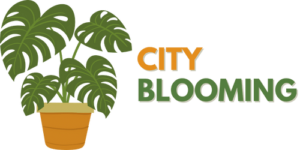The Facts About City Blooming Uncovered
The Facts About City Blooming Uncovered
Blog Article
Not known Details About City Blooming
Table of ContentsCity Blooming Fundamentals ExplainedThe 4-Minute Rule for City BloomingEverything about City BloomingUnknown Facts About City BloomingThe Facts About City Blooming Uncovered
Interested in expanding food available for sale in the City of Chicago? Thinking of starting a neighborhood yard? Changes to the Chicago Zoning Regulation allow agricultural uses like neighborhood yards and city farms in numerous components of the city. Below is a list of regularly asked concerns pertaining to the regulations and laws that farmers should take into consideration when planning an urban farming job.
The zoning amendment does not modify any type of other codes dealing with composting, structure licenses, acquiring or leasing City had residential property, business licenses or ecological contamination. There are existing codes that regulate these concerns and they remain completely effect and may apply to your job. Community gardens are normally possessed or handled by public entities, civic organizations or community-based organizations and kept by volunteers.
Urban farms expand food that is intended to be marketed, either on a nonprofit or for-profit basis. Due to their industrial function, metropolitan farms call for a business certificate.
The Basic Principles Of City Blooming
Composting is permitted yet only for plant product that is created and made use of on site. The amount of compost product can not go beyond 25 cubic backyards at any given time according to the criteria in 7-28-715 of the City's Municipal Code. Yes. Since the dirt at the majority of brand-new garden sites requires changing, garden compost, dirt, wood chips, or other products can be acquired to construct or enhance the growing area - garden care.

If a building authorization is needed then the hoophouse will be taken into consideration an accessory building. You can find out even more concerning the structure permit needs by getting in touch with the Department of Structures. The 25,000-square-foot dimension limit is meant to avoid a single neighborhood yard from dominating a provided block or interfering with the block's existing domestic or business personality.
The limitation does not use to yards found in Public Open Space (POS) districts. Can there be greater than one community garden that is 25,000 square feet on a single block? Yes. The dimension restriction puts on specific gardens, not to private blocks. No. Fencing is not needed, nevertheless, yards that have big parking lot may be required to mount fence or other landscape design attributes.
City Blooming Fundamentals Explained
B1 & B2 districts require that all commercial use activities be performed inside. R districts limit business task. The laws Get the facts show the objective and intent of the Zoning Code. Is fencing needed for urban ranches? Yes. Fences might be needed, along with landscaping and screening, for sure auto parking locations and outside work or storage locations depending on location and the particular task occurring.
Urban ranches require building permits and zoning authorizations prior to building and construction (sustainability). Various other types of city review may be needed depending on certain frameworks, activities, size, landscape design, licensing, public heath and stormwater monitoring problems.
Yes. The kind of certificate is established by what is occurring at the website. The Division of Company Matters and Customer Defense can help determine the details kind of service certificate that's needed. Yes. Off street vehicle parking is required for many industrial tasks in Chicago. The called for number of auto parking areas is based on the variety of employees working on site and not the square footage of the expanding space.
City Blooming Can Be Fun For Anyone

A city ranch can sell garden compost product created on website, nonetheless, the operation should comply with the policies in 7-28-715 of the Chicago Municipal Code. Aquaponic systems are permitted inside on urban ranches in numerous zoning districts.
Approximately five hives or swarms of honey bees might be maintained as an accessory use. However, beekeepers need to register with the Illinois Division of Agriculture. For more details about the recommended zoning modification you might get in touch with the Division of Real Estate and Economic Growth, Bureau of Preparation and Zoning at 312.744.8563.
, which takes location in country areas at the edge of suburban areas.
The 5-Second Trick For City Blooming
It can involve a movement of natural cultivators, "foodies" and "locavores", who look for to create social media networks based on a common values of nature and area holism. These networks can develop using formal institutional assistance, ending up being integrated right into regional town as a "change community" movement for lasting urban development.
In either case, the a lot more direct access to fresh vegetable, fruit, and meat items that might be know through urban farming can improve food safety and security and food safety and security while reducing food miles, bring about lower greenhouse gas emissions, thus adding to climate modification reduction. Some of the initial evidence of urban farming originates from Mesopotamia.
Report this page